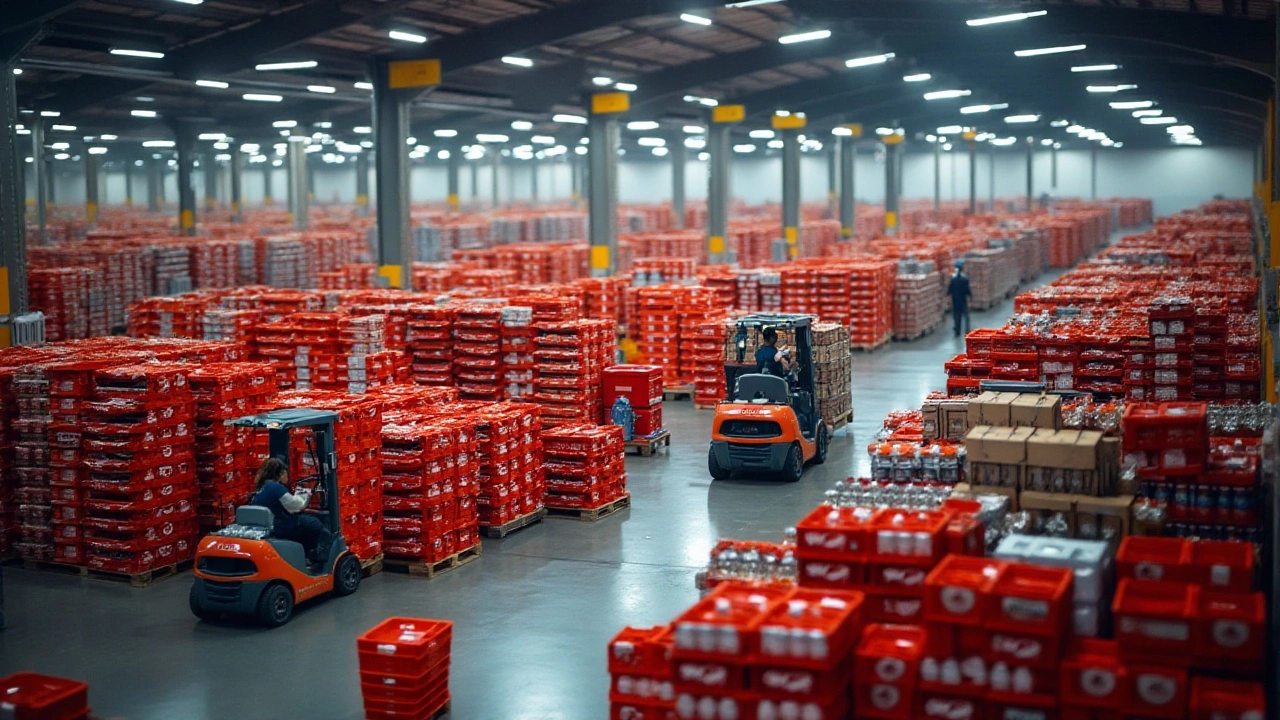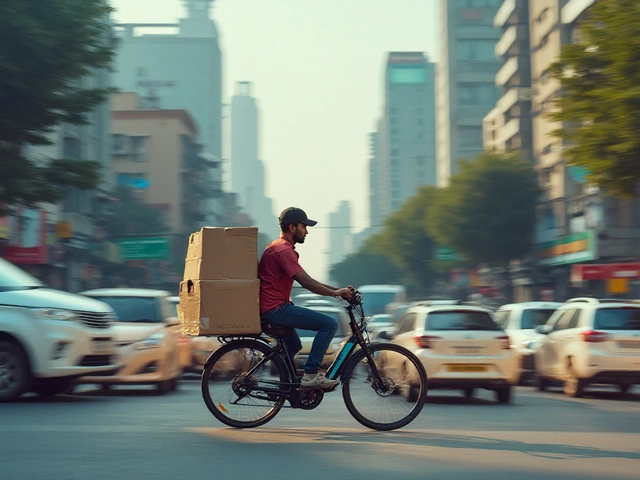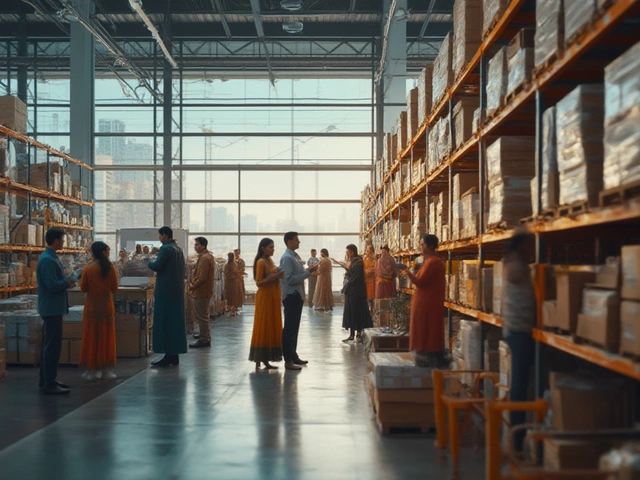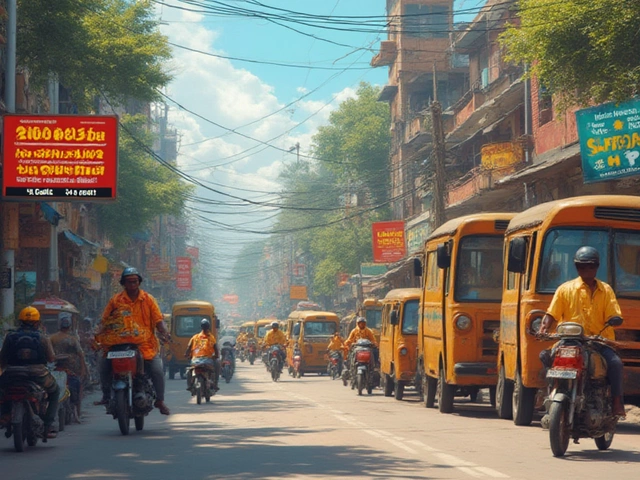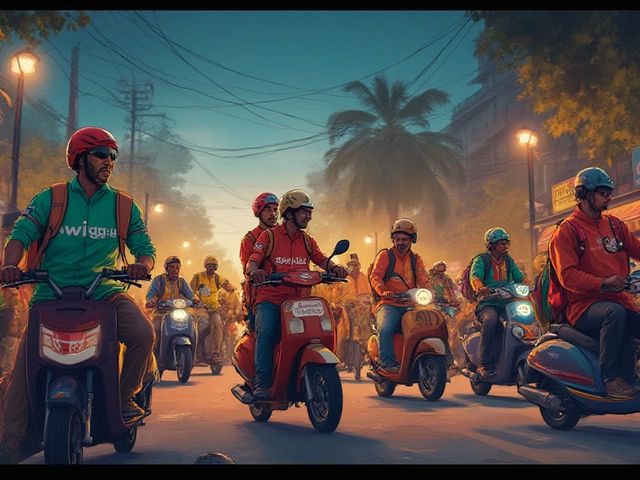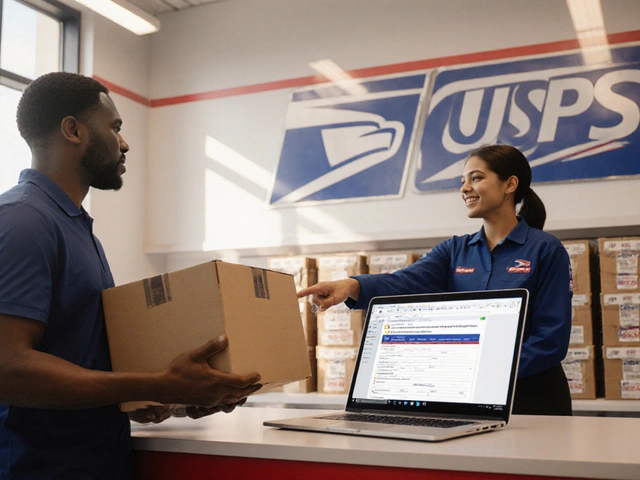Coca-Cola has become a household name, known for its refreshing beverages enjoyed by millions worldwide. Behind the scenes, a complex logistical network keeps this global giant ticking. Warehouses are an integral part of this network, ensuring that products reach consumers efficiently and promptly.
The mere mention of warehousing might conjure images of large, cavernous spaces filled with pallets and forklifts. Yet, for Coca-Cola, it's an orchestration of precise logistics and technological innovations. Discover how this beverage titan uses warehouses not just for storage, but as pivotal nodes in a web of distribution that keeps the fizz in your drink and the smile on your face.
- The Role of Warehousing in Coca-Cola's Supply Chain
- Technology and Innovations in Coca-Cola Warehousing
- Strategic Locations and Distribution Efficiency
- Sustainability and Future of Coca-Cola's Warehouses
The Role of Warehousing in Coca-Cola's Supply Chain
Warehousing is a cornerstone of Coca-Cola's extensive supply chain, a vast network that spans multiple continents and serves billions of consumers. This is not merely about storing products until they're needed; it's about orchestrating a seamless dance that involves a myriad of processes. At the heart of this system is efficiency, ensuring that products are always available where and when they're needed. Coca-Cola utilizes advanced warehousing strategies to manage the flow of its vast product range. Warehouses are strategically located near major distribution points, which significantly cuts down on transportation costs and delivery times. As a result, bottlers can produce and distribute products to retailers quickly, maintaining the freshness and fizz that Coca-Cola promises.
Coca-Cola's warehousing operations employ state-of-the-art technology systems to track and manage inventory. These systems enable real-time updates on stock levels, allowing the company to respond dynamically to changes in demand, reducing both overproduction and the chance of stockouts. Radio-frequency identification (RFID) technology and automated storage and retrieval systems (AS/RS) play pivotal roles in these warehouses. Additionally, by leveraging data analytics, Coca-Cola can predict consumer demand patterns, helping to optimize stock levels and improve customer satisfaction. This application of technology ensures that every part of the supply chain is as lean and responsive as possible, minimizing waste and inefficiencies.
Moreover, these warehouses aren't just places to hold products; they are hubs of activity where value is added through sorting, packaging, and mixing operations tailored to specific market needs. This customization capability allows Coca-Cola to remain agile, adapting to regional preferences while maintaining global consistency. As stated by a supply chain expert, "
Coca-Cola’s warehousing strategy is all about balance – maintaining a steady supply to meet consumer demand while controlling costs and minimizing environmental impact."This demonstrates their commitment to sustainability, efficiency, and customer satisfaction, pivotal elements that keep the shipments moving and the shelves stocked.
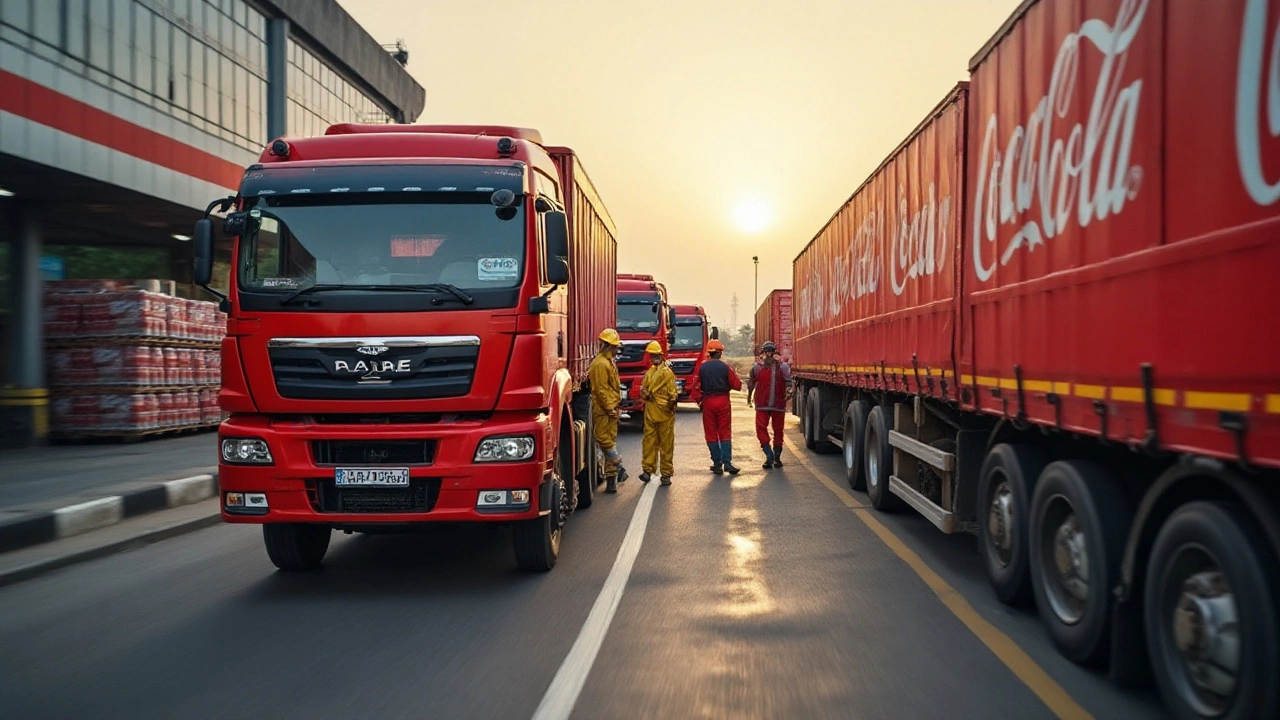
Technology and Innovations in Coca-Cola Warehousing
In the bustling world of Coca-Cola logistics, technology stands as a steadfast ally in ensuring the seamless movement of its products. The company has continuously embraced technological advancements in warehouses to enhance efficiency, accuracy, and speed. One of the key innovations is the implementation of automated storage and retrieval systems. These technologically advanced mechanisms allow for swift sorting and retrieval of goods, minimizing human error and cutting down the time it takes to prepare shipments for distribution.
Beyond automation, Coca-Cola leverages real-time data analytics to keep the pulse of its inventory and distribution patterns. By analyzing vast amounts of data, the company can predict demand surges, optimize supply levels, and reduce waste. This predictive analysis is empowered by machine learning algorithms that learn over time, fine-tuning logistics strategies to match evolving market needs.
Drones are also making their mark within warehouse environments. These tiny yet powerful machines are used to conduct inventory checks, reaching high shelves quickly and safely. They provide accurate data on stock levels and their use helps to ensure that the products are always available when needed, maintaining the brand's legacy of reliability. In an insightful comment, a logistics manager at Coca-Cola once noted,
"Drones have not only increased the accuracy of our inventory management but have significantly reduced manual labor, enabling our staff to focus on more critical tasks."
The integration of IoT (Internet of Things) devices into Coca-Cola's warehousing solutions also plays a critical role. Sensors placed throughout the warehouses monitor the environment, ensuring optimal conditions for product storage. Temperature, humidity, and light levels are consistently regulated, preventing spoilage and maintaining the quality of products. This network of IoT devices creates a smart warehouse ecosystem, fostering sustainability and energy efficiency—factors that align with Coca-Cola's commitment to environmental responsibility.
Another significant innovation is the use of electric and autonomous vehicles within warehouses. These vehicles reduce carbon footprints and offer an efficient method of transporting goods across various warehouse sections without requiring a manual operator. This shift not only supports the company's sustainability efforts but also advances logistical efficiency. As part of their strategy, Coca-Cola has invested in these technologies, recognizing their potential to reshape warehouse dynamics and contribute to a greener planet.
As we look at Coca-Cola's ventures in the realm of technology-driven warehousing, it's clear that their forward-thinking approach is setting new industry standards. Their ongoing investment in tech includes plans to trial AI-powered robots for complex tasks, ensuring that the company stays ahead of the curve in warehouse solutions. The blend of human ingenuity and machine precision is what makes Coca-Cola's warehousing an exemplary model of modern supply chain management.
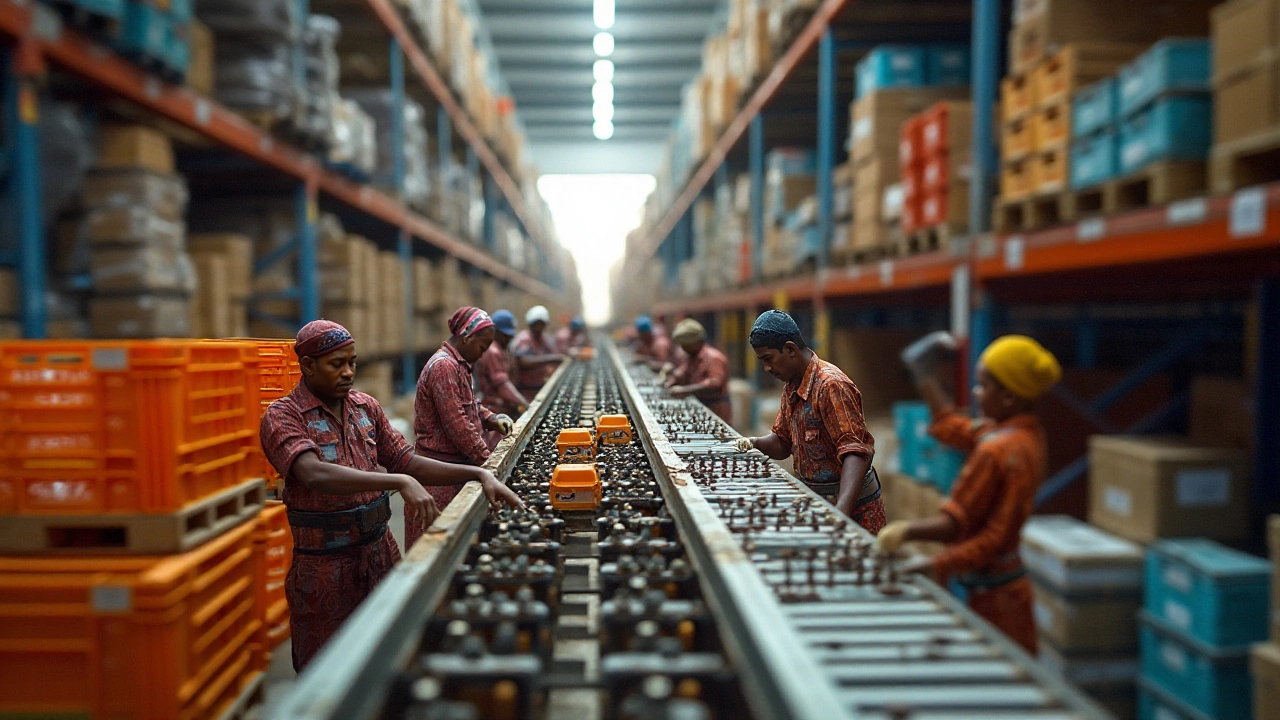
Strategic Locations and Distribution Efficiency
For a global giant like Coca-Cola, the choice of strategic warehouse locations is not made on a whim. It involves years of research and data analysis to ensure that each site optimizes the flow of products from production to consumer hands. A well-placed warehouse reduces transportation costs, minimizes delivery times, and improves the overall efficiency of the supply chain. For instance, Coca-Cola strategically positions its warehouses close to primary markets or near major transportation hubs like ports, railways, and highways. This logistical foresight allows the company to quickly adapt to changing market conditions and meet demand spikes efficiently.
The importance of location cannot be understated. A warehouse positioned closer to urban centers or high-demand areas ensures prompt delivery, which is crucial for maintaining fresh inventories. The company also considers geographic and climatic factors, which are vital in regions where weather conditions might disrupt supply chains. It's not just about proximity to roads; it's about anticipating the unpredictable, like floods or heavy snow, that could hamper deliveries. Additionally, strategic location helps in minimizing carbon emissions by reducing unnecessary transportation routes, supporting Coca-Cola's commitment toward sustainability.
Coca-Cola employs a model known as the "hub-and-spoke" system, where central warehouses (the hubs) are connected to smaller, regional ones (the spokes). This model allows for bulk storage in central hubs, while faster distribution happens through the spokes. Another strategy is the use of multi-level warehouses in densely populated areas. These structures maximize storage space within limited footprints, making them ideal for cities where real estate is at a premium.
According to Logistics Management, "Warehousing at such strategic locations plays a crucial role in modern supply chains, balancing cost and service performance."This model enhances not just logistical efficiency but also provides a buffer during peak demand periods, ensuring customers never face shortages.
Advanced technologies also contribute significantly to distribution efficiency. Coca-Cola uses cutting-edge inventory management systems that provide real-time data on stock levels, ensuring precise order fulfillment. Automated guided vehicles and robotic systems further streamline operations within these strategic locations, speeding up loading and unloading processes. In terms of distribution, these technological investments allow Coca-Cola to maintain transparency and traceability throughout its supply chain. The use of cloud-based systems and IoT devices ensures that every item can be tracked from warehouse to retailer, optimizing distribution in a way that was previously unimaginable.
Finally, as Coca-Cola expands its global operations, the company continuously reassesses its strategies concerning warehouse locations. This adaptive approach ensures that resources are optimally used, aligning with growth trajectories and emerging markets. Establishing partnerships with third-party logistics providers also extends Coca-Cola's reach, allowing the brand to penetrate markets it wouldn't have been able to serve purely through traditional means. Aligning resources in this manner helps cover any gaps in distribution, ensuring that Coca-Cola products maintain their steadfast promise of availability to all.
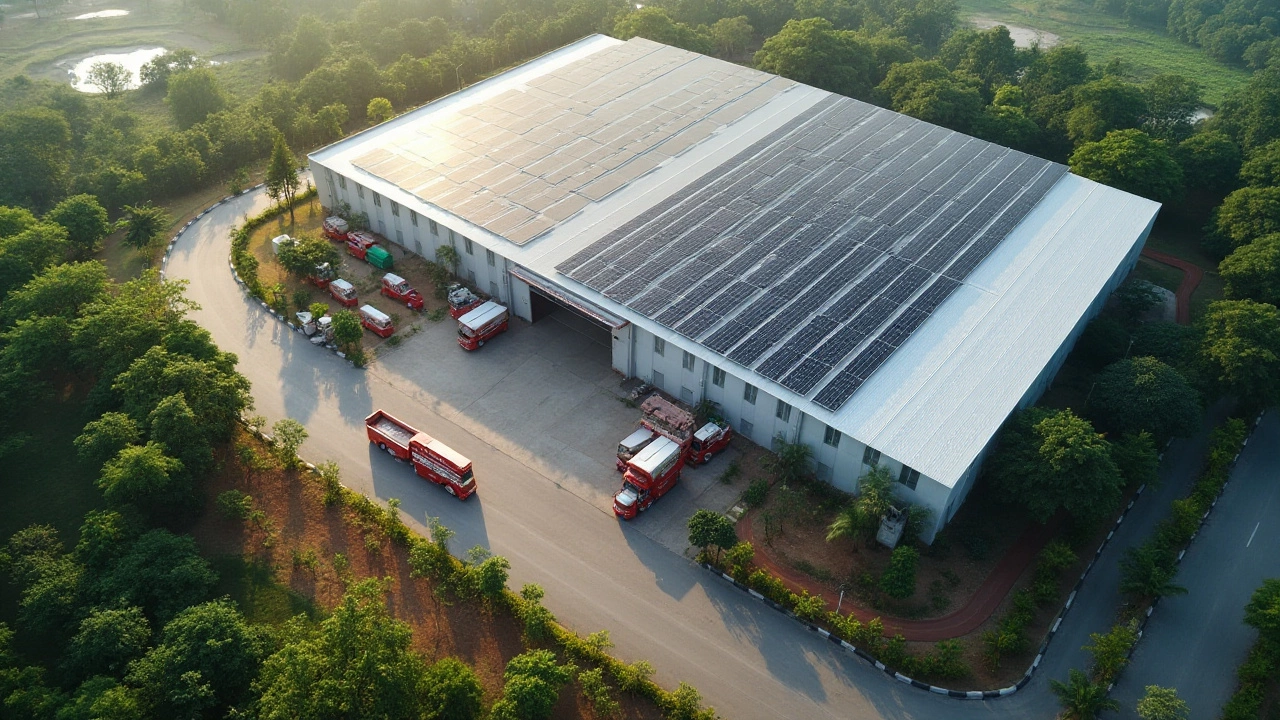
Sustainability and Future of Coca-Cola's Warehouses
In today's era, where environmental concerns are at the forefront of global discourse, companies like Coca-Cola are taking steps to ensure their operations are as eco-friendly as possible. Part of this effort involves the transformation of their warehouses into sustainable hubs. The company has been integrating a variety of green technologies and practices into its logistics network, significantly cutting energy use and reducing its carbon footprint. This includes optimizing energy consumption through the installation of solar panels and LED lighting in their facilities, an initiative which not only conserves energy but also slashes operational costs.
An important aspect of Coca-Cola's sustainability mission involves reducing waste. The company has put robust recycling processes in place across its warehouses to minimize the impact on landfills. It actively promotes the reuse of materials and the recycling of packaging elements, transforming waste management into a key part of warehouse operations. Coca-Cola’s dedication to reducing environmental impact is evident in their ambitious ‘World Without Waste’ program, aimed at collecting and recycling a bottle or can for every one sold by 2030. This initiative has not only set a precedent but also challenged competitors to follow suit. A senior executive at Coca-Cola once remarked, "Our commitment to a sustainable future is not just an obligation but a grip of responsibility towards the planet and future generations." Such a statement underlines the weight the company positions behind its environmentally-friendly initiatives.
The Future Vision of Warehousing
Looking ahead, Coca-Cola's vision for the future of its logistics includes integrating cutting-edge technology and automation into its warehouses. As AI and robotics advance, the company anticipates even more streamlined operations, further reducing both resource consumption and costs while maintaining high efficiency. With the help of AI-driven demand forecasting, Coca-Cola can efficiently manage stock levels, ensuring that products are delivered fresh and on time. Additionally, the exploration of autonomous vehicles and drone technology for local deliveries hints at a future where supply chain emissions could be reduced dramatically, aligning with the company's sustainability objectives.Another exciting development is the use of big data to enhance efficiency and sustainability. Collecting and analyzing data from various segments of the supply chain allows Coca-Cola to optimize routes, reduce idling time for its delivery trucks, and further alleviate environmental pressure. This proactive approach not only enhances the supply chain's efficiency but also strengthens its adaptability to the ever-evolving market dynamics. Below is a sneak peek into how Coca-Cola's future-facing initiatives align with sustainability.
| Initiative | Benefit |
|---|---|
| Solar Energy | Reduces carbon footprint, saves on energy costs |
| AI Demand Forecasting | Streamlines operations, minimizes waste |
| Drone Deliveries | Decreases emissions, improves delivery times |
In conclusion, Coca-Cola's commitment to sustainability within its warehouses is a testament to the dual focus of modern-day logistics—efficiency paired with environmentally conscious practices. As the supply chain continues to evolve, the company's warehouses will likely set the standard, demonstrating that ecological responsibility and business growth can indeed go hand in hand.
